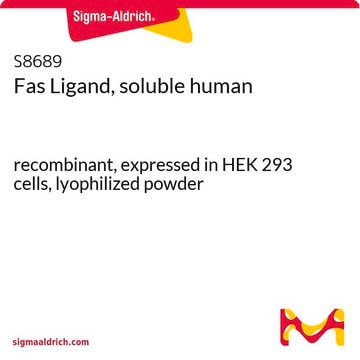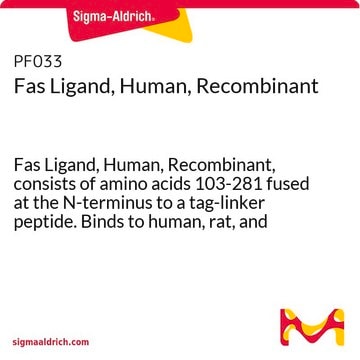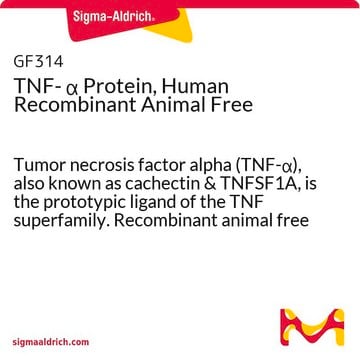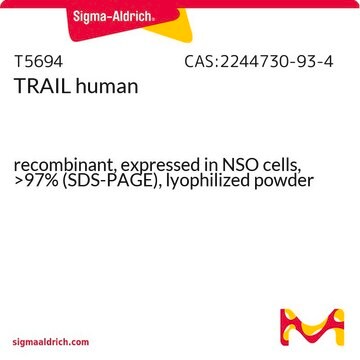GF092
TRAIL Protein, Recombinant human
Human TRAIL (TNF-Related Apoptosis Inducing Ligand), also called APO2 Ligand, is a cytotoxic protein which activates rapid apoptosis in tumor cells, but not in normal cells.
Sinonimo/i:
Apo2 Ligand
About This Item
Prodotti consigliati
Origine biologica
human
Livello qualitativo
Ricombinante
expressed in E. coli
Saggio
>98% (SDS-PAGE and HPLC)
Forma fisica
solid
PM
19.6 kDa
Produttore/marchio commerciale
Chemicon®
tecniche
cell culture | mammalian: suitable
Impurezze
<0.1 ng/μg Endotoxin (of TRAIL/Apo2L; 1EU/μg)
input
sample type hematopoietic stem cell(s)
Compatibilità
suitable for molecular biology
N° accesso NCBI
N° accesso UniProt
Condizioni di spedizione
dry ice
Informazioni sul gene
human ... TNFSF10(8743)
Descrizione generale
Applicazioni
Azioni biochim/fisiol
Stato fisico
Stoccaggio e stabilità
Note legali
Esclusione di responsabilità
Codice della classe di stoccaggio
11 - Combustible Solids
Classe di pericolosità dell'acqua (WGK)
WGK 3
Certificati d'analisi (COA)
Cerca il Certificati d'analisi (COA) digitando il numero di lotto/batch corrispondente. I numeri di lotto o di batch sono stampati sull'etichetta dei prodotti dopo la parola ‘Lotto’ o ‘Batch’.
Possiedi già questo prodotto?
I documenti relativi ai prodotti acquistati recentemente sono disponibili nell’Archivio dei documenti.
Il team dei nostri ricercatori vanta grande esperienza in tutte le aree della ricerca quali Life Science, scienza dei materiali, sintesi chimica, cromatografia, discipline analitiche, ecc..
Contatta l'Assistenza Tecnica.







